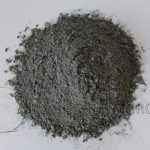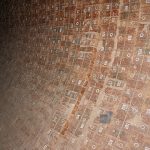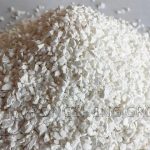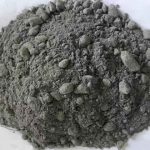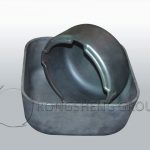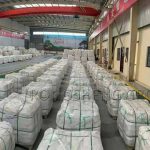Mullite refractory bricks and corundum mullite bricks have the advantages of high load softening temperature, low high-temperature creep rate, and good thermal shock resistance. It is widely used in industrial furnaces such as blast furnace hot blast furnace, glass melting furnace, dry quenching, and heating furnace. Mullite refractory is easily corroded by alkaline refractory bricks at high temperatures. In addition, at high temperatures, mullite can react with water vapor to generate Al2O3 and be damaged. Therefore, mullite refractory bricks are not suitable for long-term use in environments with high alkaline slag and high water vapor content.
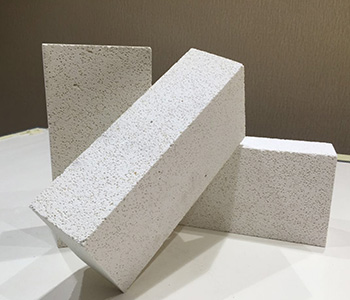
Mullite Composite Brick
In addition to mullite and its composite refractory bricks composed of corundum, mullite can also be combined with other materials to form refractory bricks to improve its performance. Such as zirconia mullite refractory bricks, mullite-silicon carbide refractory bricks, etc. The so-called zirconia mullite refractory bricks are mullite-zirconia composite materials. However, due to the high price of zirconia, zircon mullite clinker or refractory bricks are often produced by the reaction of Al2O3 or alumina with zircon in actual production.
Refractory bricks made with sintered or fused mullite as the main raw material can be made of mullite, part of mullite, and part of corundum. The former is called mullite refractory bricks, and the latter is called corundum-mullite refractory bricks or corundum mullite bricks. The production process of mullite refractory bricks is the same as that of high alumina bricks. The ingredients are mixed, formed, dried, and fired. The firing temperature is related to the composition of the ingredients, the purity of the raw materials, and the requirements for the performance of refractory bricks, usually 1500-1700°C.
Mainly used for hot blast stovetop, blast furnace body and bottom, regenerator of glass melting furnace, ceramic sintering kiln, dead corner lining of petroleum cracking system, etc.
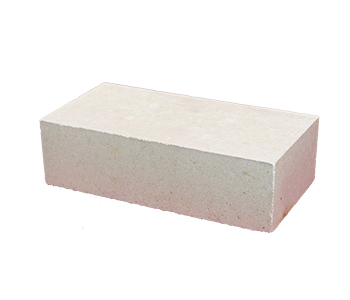
Fused Zirconia Mullite Brick
The structure of mullite is improved by introducing ZrO2 into A12O3-SiO2 bricks. It can improve the chemical resistance, thermal shock resistance, and reduce the expansion coefficient of mullite. This kind of mullite brick containing ZrO2 is commonly called zirconia mullite brick. It is generally produced by the electric melting method, but also produced by the sintering method.
Sintered zirconia mullite bricks use industrial alumina and zircon concentrate as raw materials. Through the reaction sintering process, zirconia is introduced into the mullite matrix to make a special refractory material.
Introducing zirconia into mullite bricks, and using the phase change toughening of zirconia can greatly improve the high-temperature mechanical properties of mullite materials. Zirconia promotes the sintering of mullite materials. The addition of ZrO2 can accelerate the densification and sintering process of ZTM materials due to the generation of low melting point substances and the formation of vacancies. When the mass fraction of ZrO2 is 30%, the relative theoretical density of the green body fired at 1530°C will reach 98%, and the strength will reach 378MPa.
Zirconia mullite bricks made by reaction sintering with industrial alumina and zircon as raw materials. Because the reaction and sintering proceed at the same time, the process control is more difficult. Usually, the temperature is kept at 1450°C during firing to make it densified, and then the temperature is raised to 1600°C for a reaction. ZrSiO4 decomposes into ZrO2 and SiO2 at a temperature greater than 1535°C, where SiO2 and Al2O3 react to form mullite. A part of the liquid phase appears during the decomposition of ZrSiO4, and the decomposition of ZrSiO4 can refine the particles, increase the specific surface area, and promote sintering.
Studies have shown that when the added amount of zircon is less than 54.7%, as the added amount of zircon increases, the microstructure of the sintered sample gradually transitions from a network composed of columnar corundum to a network structure composed of columnar mullite. The high-temperature flexural strength (1400℃) of the sample also increases with the increase of the zirconia content. A larger value appears when the zirconia content is 23.7%, and then the strength decreases. The addition of zircon helps to improve thermal shock resistance.

Rongsheng Refractory Brick Price
Rongsheng is an experienced refractory brick manufacturer and seller. Rongsheng has customers in more than 60 countries all over the world. Rongsheng’s refractory brick products are also well received by various customers. Rongsheng’s main refractory brick products include alumina refractory bricks, magnesia bricks, silica bricks, corundum bricks, insulation bricks, etc. If your thermal furnace equipment needs to replace or repair the refractory lining, please contact us. We will provide you with services according to your specific needs. Get the price of refractory bricks, the ex-factory price of Rongsheng refractory bricks may have a great advantage for you.



